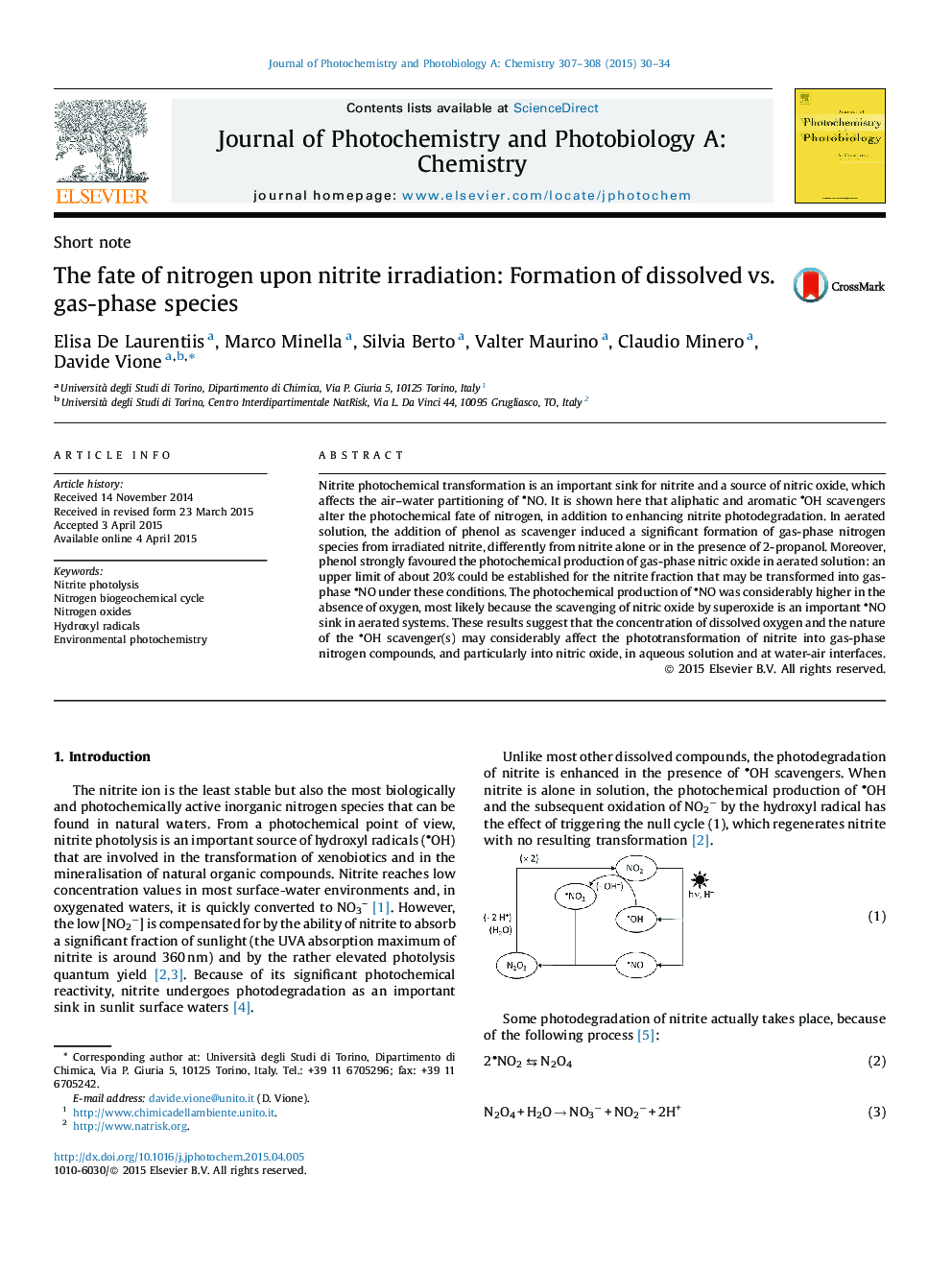| Article ID | Journal | Published Year | Pages | File Type |
|---|---|---|---|---|
| 26045 | Journal of Photochemistry and Photobiology A: Chemistry | 2015 | 5 Pages |
•Hydroxyl radical scavengers enhance nitrite photodegradation.•A significant loss of dissolved nitrogen occurs in irradiated systems with phenol.•Part of the lost nitrogen is in the form of nitric oxide.•Evidence is provided for superoxide as a major sink of nitric oxide in solution.
Nitrite photochemical transformation is an important sink for nitrite and a source of nitric oxide, which affects the air–water partitioning of NO. It is shown here that aliphatic and aromatic OH scavengers alter the photochemical fate of nitrogen, in addition to enhancing nitrite photodegradation. In aerated solution, the addition of phenol as scavenger induced a significant formation of gas-phase nitrogen species from irradiated nitrite, differently from nitrite alone or in the presence of 2-propanol. Moreover, phenol strongly favoured the photochemical production of gas-phase nitric oxide in aerated solution: an upper limit of about 20% could be established for the nitrite fraction that may be transformed into gas-phase NO under these conditions. The photochemical production of NO was considerably higher in the absence of oxygen, most likely because the scavenging of nitric oxide by superoxide is an important NO sink in aerated systems. These results suggest that the concentration of dissolved oxygen and the nature of the OH scavenger(s) may considerably affect the phototransformation of nitrite into gas-phase nitrogen compounds, and particularly into nitric oxide, in aqueous solution and at water-air interfaces.
